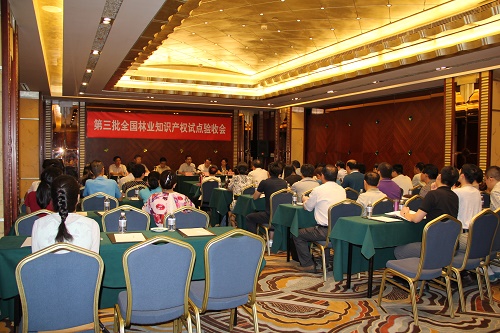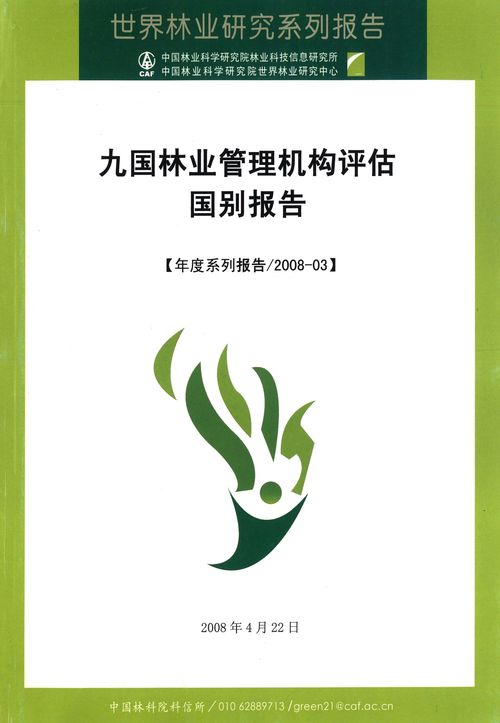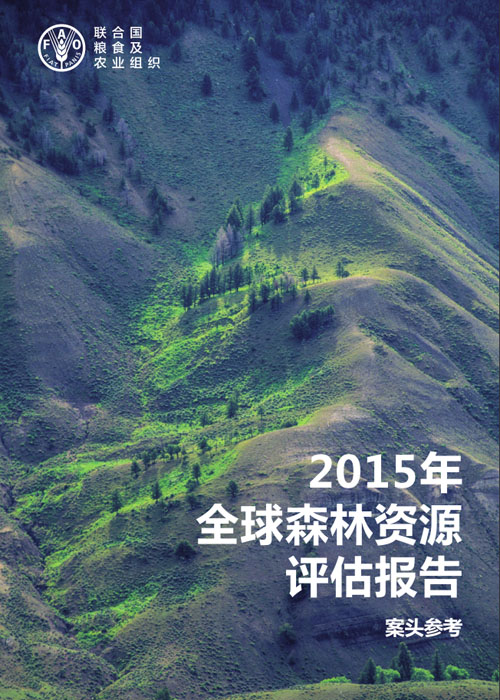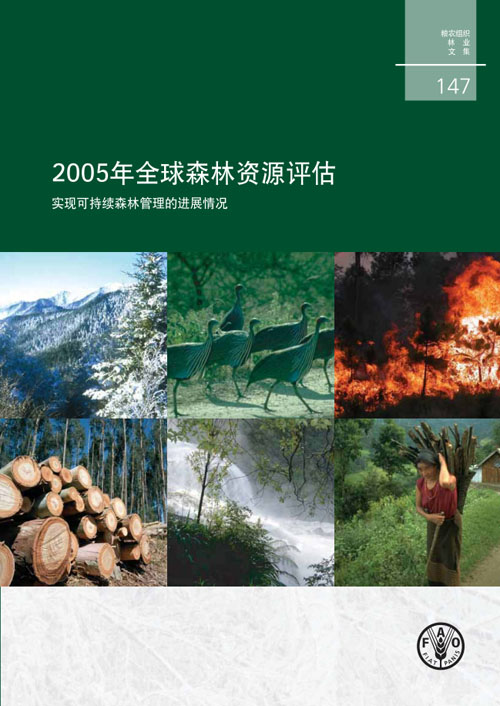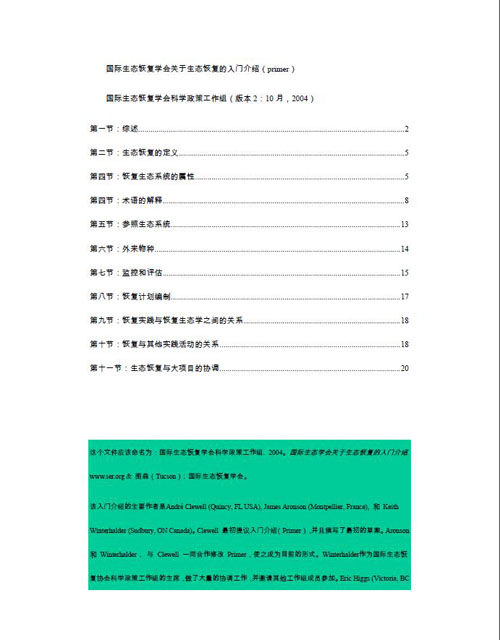
贵州樟江流域生物多样性保护优先格局评估
编号
lyqk008938


中文标题
贵州樟江流域生物多样性保护优先格局评估


作者
傅微


作者单位
北京建筑大学建筑与城市规划学院 北京 100044


期刊名称
中国城市林业


年份
2021


卷号
19


期号
4


栏目名称
研究论文


中文摘要
文章以贵州樟江流域为典型案例,运用保护格局优化和流域景观尺度系统保护规划的前沿软件Zonation4GUI统计46种保护对象的物种分布,以集水区为单元,对物种适宜栖息地进行基于互补性算法的优先排序;结合城镇发展成本、生境退化、优先权重分析等迭代计算,制定两种高价值保护优先格局和保护情景方案,评估优化前后两种情景中一、二、三级优先区保护格局的保护目标实现情况。结果显示,在生态完整性优先的保护格局情景中加入小于6%的优先区域,可增加31.6%的保护物种完全实现保护目标,全面提高各保护对象的保护效率;在城镇发展成本参与迭代的保护情景中加入6%的优先区域,达到保护目标的保护对象的比例增加了13.2%,未受保护的对象清零。因此,通过生物多样性保护优先格局的整合优化可以达成化解生态保护和城镇发展用地矛盾、提高保护成效的目的,对推进流域生态文明建设和可持续发展目标实现具有借鉴意义。


基金项目
国家自然科学基金项目基于生态效益的北京城市绿地格局规划实施评价(41901220);北京市优秀人才培养资助青年骨干个人项目基于景观生态效应的北京城市蓝绿空间规划实施评价及优化(2426922000);北京市教委科研项目基于生态效益的北京城市绿地格局规划实施评价(KM201910016018)


英文标题
Evaluation of Spatial Prioritization for Biodiversity Conservation in the Zhangjiang River Basin, Guizhou Province


作者英文名
Fu Wei


单位英文名
School of Architecture and Urban Planning, Beijing University of Civil Engineering and Architecture, Beijing 100044, China


英文摘要
With Zhangjiang River Basin as a case, the paper uses Zonation4GUI, the cutting-edge software for Spatial Conservation Prioritization and System Conservation Planning at watershed landscape scale, to make statistics of the distribution of 46 protected species. The prioritization produces a complementarity driven priority ranking of the given adaptive habitat based on each catchment cell. On top of that, by integrating urban development cost, habitat degradation, priority weight analysis and other algorithms, high-value prioritized conservation areas and conservation strategies targeted at two scenarios are mapped out, whereby the conservation efficiency of Class I, II, and III of prioritized conservation patterns under the 2 conservation scenarios before and after optimization is evaluated. The research findings show that by adding less than 6% of priority areas to the conservation pattern scenario featuring prioritized ecological integrity, an increase by 31.6% of protected species can be achieved, fully accomplishing the conservation targets. In the scenario where urban development cost is added in iteration, the adding by 6% of priority areas can witness an increase by 13.2% of the protected species which meet the conservation target, and the number of unprotected species is down to zero. Research shows that the contradiction between ecological conservation and urban development land use can be resolved by optimizing and adjusting the spatial pattern of biodiversity conservation, which can also refine conservation effectiveness. On that account, it is of referential significance to promote the development of watershed-wide ecological civilization and materializing sustainable development.


英文关键词
conservation pattern prioritization;watershed landscape;urban development cost;evaluation


起始页码
29


截止页码
35


投稿时间
2020/5/21


作者简介
傅微(1988-),女,博士,讲师,研究方向为景观生态规划研究。E-mail:fuwei@bucea.edu.cn


DOI
10.12169/zgcsly.2020.05.21.0001


参考文献
[1] 史雪威,张路,张晶晶,等.西南地区生物多样性保护优先格局评估[J].生态学杂志,2018,27(12):3721-3728.
[2] FULLER R A,IRVINE K N,DEVINE-WRIGHT P,et al.Psychological benefits of greenspace increase with biodiversity[J].Biology Letters,2007,3(4):390-394.
[3] NORI J,LESCANO J.N.,ILOLDI-RANGEL P,et al.The conflict between agricultural expansion and priority conservation areas:Making the right decisions before it is too late[J].Biological Conservation,2013,159:507-513.
[4] PRESSEY R L,WHISH G L,BARRETT T W,et al.Effectiveness of protected areas in north-eastern New South Wales:recent trends in six measures[J].Biological Conservation,2002,106(1):57-69.
[5] SÁNCHEZ-FERNÁNDEZ D,ABELLÁN P.Using null models to identify under-represented species in protected areas:A case study using European amphibians and reptiles[J].Biological Conservation,2015,184:290-299.
[6] ALBERT C,FVRST C,RING I,et al.Research note:Spatial planning in Europe and Central Asia-Enhancing the consideration of biodiversity and ecosystem services[J].Landscape and Urban Planning,2020,196:103741.
[7] MARGULES C R,PRESSEY R L.Systematic conservation planning[J].Nature,2000,405:243-253.
[8] FAN M,SHIBATA H,CHEN L.Spatial conservation of water yield and sediment retention hydrological ecosystem services across Teshio watershed, northernmost of Japan[J].Ecological Complexity,2018,33:1-10.
[9] SNALL T,LEHTOMAKI J,ARPONEN A,et al.Green infrastructure design based on spatialconservation prioritization and modeling of biodiversity features and ecosystem services[J].Environmental Management,2016,57:251-256.
[10] MOILANEN A,WILSON K A,POSSINGHAM H P.Spatial conservation prioritization:quantitative methods & computational tools[M].New York:Oxford University Press,2009.
[11] ARPONEN A,CABEZA M,EKLUND J,et al.Costs of integrating economics and conservation planning[J].Conservation Biology,2010,24:1198-1204.
[12] MCKENNEY B A,KIESECKER J M.Policy development for biodiversity offsets:a review of offset frameworks[J].Environmental Management,2010,45:165-176.
[13] JALKANEN J,TOIVONEN T,MOILANEN A.Identification of ecological networks for land-use planning with spatial conservation prioritization[J].Landscape Ecology,2019,35:353-371.
[14] 马琳,李俊清.基于系统保护规划的长白山阔叶红松林保护网络优化研究[J].生态学报,2019,39(22):8547-8555.
[15] AGARDY T,DI SCIARA G N,CHRISTIE P.Mind the gap:addressing the shortcomings of marine protected areas through large scale marine spatial planning[J].Marine Policy,2011,35(2):226-232.
[16] 王历,周忠发,侯玉婷,等.基于投影寻踪聚类模型的喀斯特地区水环境质量评价分析:以荔波县樟江为例[J].水利水电技术,2018,49(3):111-118.
[17] ZHANG X,VINCENT A C J.Conservation prioritization for seahorses (Hippocampus spp.)at broad spatial scales considering socioeconomic costs[J].Biological Conservation,2019,235:79-88.
[18] LEHTOMÄKI J,TOMPPO E,KUOKKANEN P,et al.Applying spatial conservation prioritization software and high-resolution GIS data to a national-scale study in forest conservation[J].Forest Ecology and Management,2009,258:2439-2449.
[19] Guo Z L,Cui G F,Zhang M L,et al.Analysis of the contribution to conservation and effectiveness of the wetland reserve network in China based on wildlife diversity[J].Global Ecology and Conservation,2019,20:e00684.
[20] CHI X L,ZHANG Z J,XU X T,et al.Threatened medicinal plants in China:distributions and conservation priorities[J].Biological Conservation,2017,210:89-95.
[21] Zhang L B,Luo Z H,Mallon D,et al.Biodiversity conservation status in China's growing protected areas[J].Biological Conservation,2017,210:89-100.
[22] 张则瑾,郭焱培,贺金生,唐志尧.中国极小种群野生植物的保护现状评估[J].生物多样性,2018,26(6):572-577.


PDF全文
浏览全文


-
相关记录
更多
- 我国林草规划体系探析 2023
- 福建江西两省食用林产品质量安全监管工作调研评估 2021
- 城市公园绿地生态系统文化服务评估研究进展 2020
- 美国国有森林系统规划管理 2018
- 黄藤果用林的经济价值评估 2015
- 自然保护区旅游可持续发展评估研究现状及展望 2015
 打印
打印
